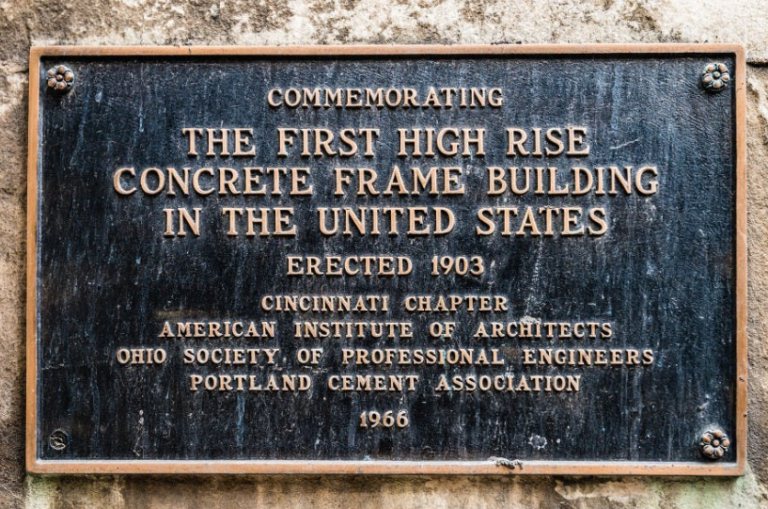Ingalls Building
First Reinforced Concrete Skyscraper Gets Repurposed
Built in 1903 in Cincinnati, Ohio, the Ingalls Building is the world’s first reinforced concrete skyscraper. The 16-story building was designed by the Cincinnati architectural firm Elzner & Anderson and was named for its primary financial investor, Melville E. Ingalls. Prior to 1902, the tallest reinforced concrete structure in the world was only six stories high. Since concrete possesses very low tensile (pulling) strength, many people from both the public and the engineering community believed that a concrete tower as tall as the plan for the Ingalls Building would collapse under wind loads or even its own weight. The building was considered a daring engineering feat at the time, but its success contributed to the acceptance of concrete construction in high-rise buildings throughout the United States.
In 2018, the city of Cincinnati approved the redevelopment project to convert the Ingalls Building into a Courtyard by Marriott, complete with custom historic replication windows by Graham Architectural Products. Tim Davis, President of Graham independent rep Agency, AR Design Inc., noted “The most unique feature that Graham and AR Design brought to the project are the aluminum corbels. They are not a casting but rather were CNC’d from a solid block of aluminum. We took templates from some granite corbels on a building across the street as none of the original corbels remained on the Ingalls Building and from sketches and photos we began to draw the design.”
photo credit Graham Architectural Products
The result was a modern replication of a historic architectural detail not part of the building for many years. Tim continued “This is a shining example of Graham’s engineering skills as well as our attention to this level of historic detail. Also, these Kynar-painted aluminum corbels will be there well into the future and will not deteriorate over time like other materials would.”
Graham provided over 100 Series 1200 and Series S1400 fixed windows with high performance low-e glass for the buildings window openings. As described above Graham designed and fabricated the solid aluminum custom corbels for the second floor windows.
The building was designated a National Historic Civil Engineering Landmark in 1974 by the American Society of Civil Engineers and in 1975, it was added to the National Register of Historic Places.
The building was purchased on January 17, 2013 by CLA OH LLC (an affiliate of Claremont Group, a New York City-based real estate development firm) from CapCar Realty 1.1 LLC, for $1.45 million. In November 2013, Claremont Group CEO Perry Chopra disclosed his intentions to convert the office building into 40 to 50 condos, with ground-floor retail. However, in April 2015, a real estate broker announced that the building was again for sale, after Claremont Group decided not to execute the condominium project. The recent conversion to the Courtyard by Marriott was completed in 2021.


